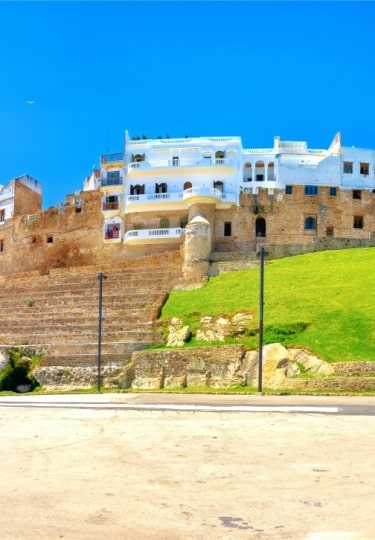With its mix of cultures and rich history, the list of best things to do in Tangier is a long one. From the meandering streets of the Medina to delicious cuisine, the city has been enchanting travelers for centuries.
Across a narrow strait from Gibraltar, Tangier has been a historical entry point to Africa from Europe. The Phoenicians, Romans, and the poets of the Beat Generation—each has left a mark.
In this exciting city, you can see Punic graves from before the Christian era and admire French architecture from the 1920s, or a Moroccan palace. On another day, you might visit an English church, America’s first overseas Legation, and a Jewish cemetery.
Go Astray in the Old Medina
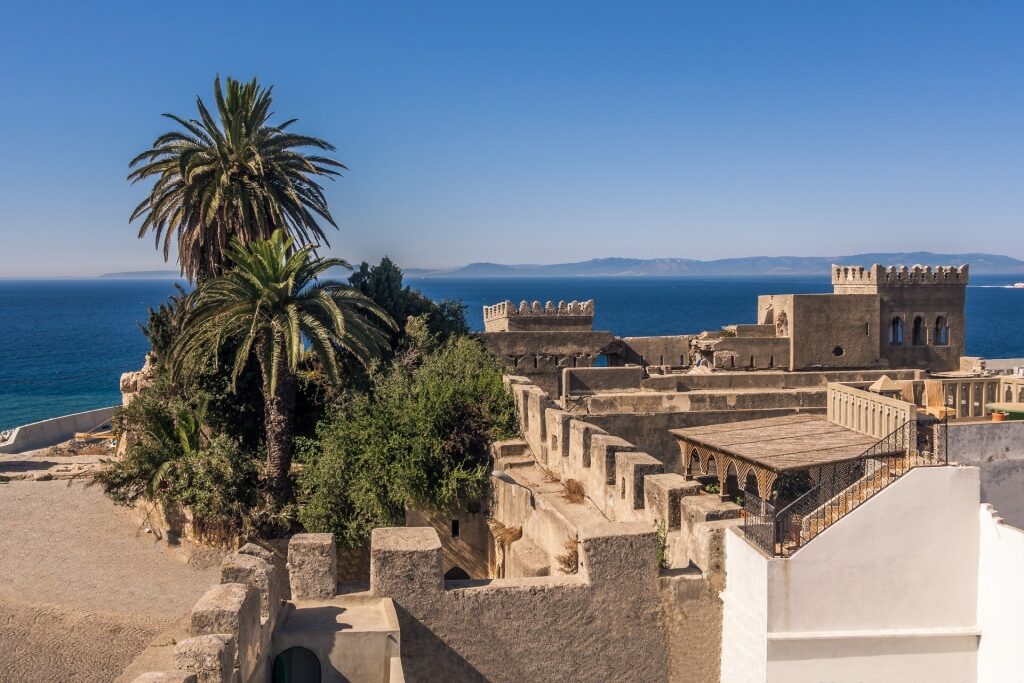
Old Medina
Exploring Tangier’s Medina is one of the best things to do in Morocco, a maze of narrow alleys full of shops focusing on traditional crafts. It’s a mostly pedestrianized shopper’s dream, thanks to the choice of colorful carpets, leatherwork, brassware, and other handmade goods.
Streets lined with near-identical whitewashed buildings make the Medina something of a labyrinth for first-time visitors. But you don’t have to walk far in any direction to reach the enclosing wall and re-orientate yourself.
The Medina sprawls prettily down a hill overlooking the Straits of Gibraltar. At the top is the historic Kasbah, a fortress dating to the 17th century that is another helpful landmark.
Recognized as a World Heritage Site, the Medina retains its own distinct identity. You’ll need comfortable shoes to walk it and good bargaining skills to fully enjoy the fun of it.
Admire the Kasbah Museum
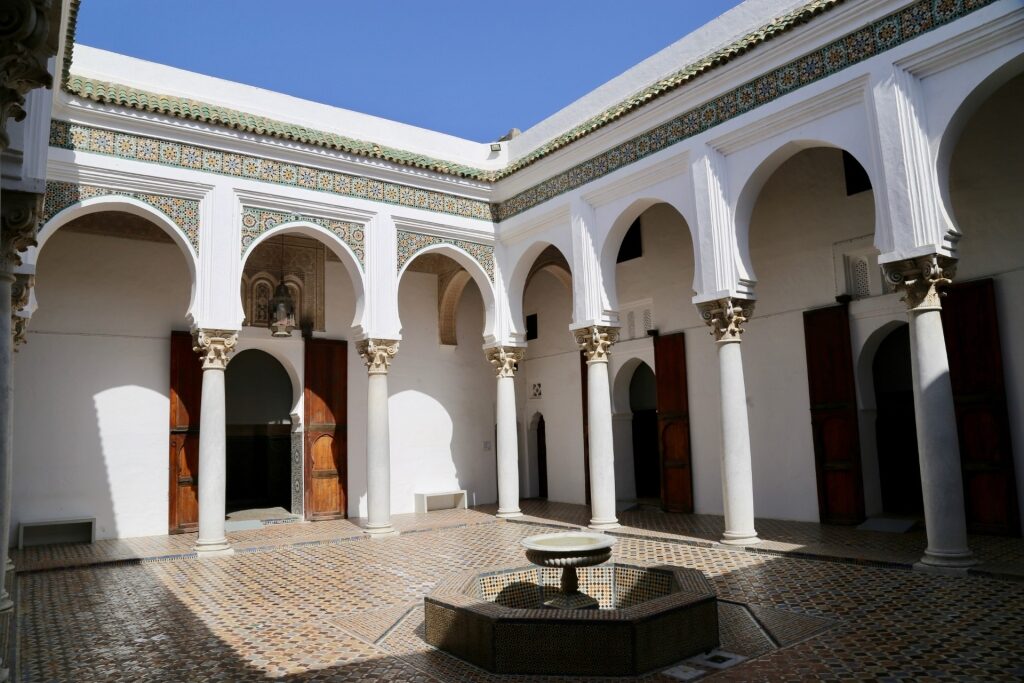
Kasbah Museum
Standing high above the Medina, the Kasbah was a fortified citadel and home to the Sultan. From here, you have sweeping views of the Mediterranean and the Tangier waterfront.
The former Sultan’s palace, sitting at the heart of its winding streets, now houses the Museum of Mediterranean Cultures. It spans from ancient times through the 20th century, with Phoenician artifacts, Roman mosaics, and exquisite Moroccan crafts.
The ornate palace itself, the Dar el-Makhzen, is part of the experience. It’s a wonderland of carved wooden ceilings and zellige tilework, with a beautiful Andalusian-style garden.
Linger in the Petit Socco
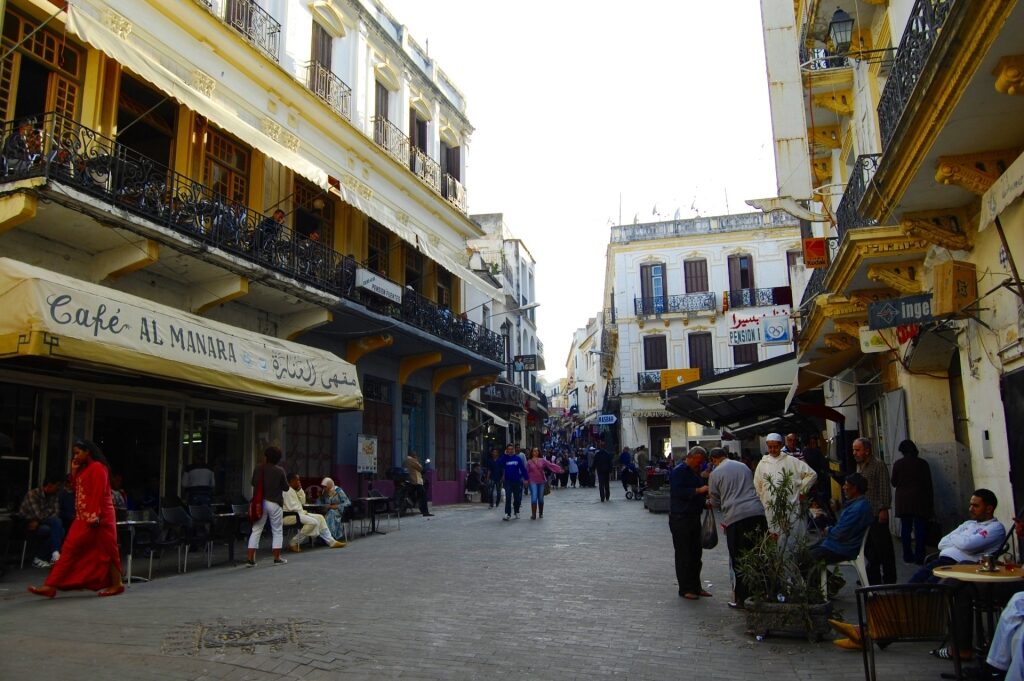
Petit Socco Photo by Andrzej Wójtowicz on Flickr, licensed under CC BY-SA 2.0
The “Small Souk/Market” is a compact square at the heart of the Old Medina. Once surrounded by diplomatic missions and banks, its cafés were the heart of gossip and international intrigue from the 1920s through the 1950s.
Café Tingis and Café Central are both still there, as atmospheric as ever. Sit out front with a mint tea and watch the world come to you along Rue Es-Siaghine, once old Tangier’s main street.
This is the social center of the Medina and local life goes on among the many visitors. Watch for the trays of tea being carried off to thirsty shopkeepers, while worshippers pass on their way to the Friday Mosque.
Delve into Musee Dar Niaba
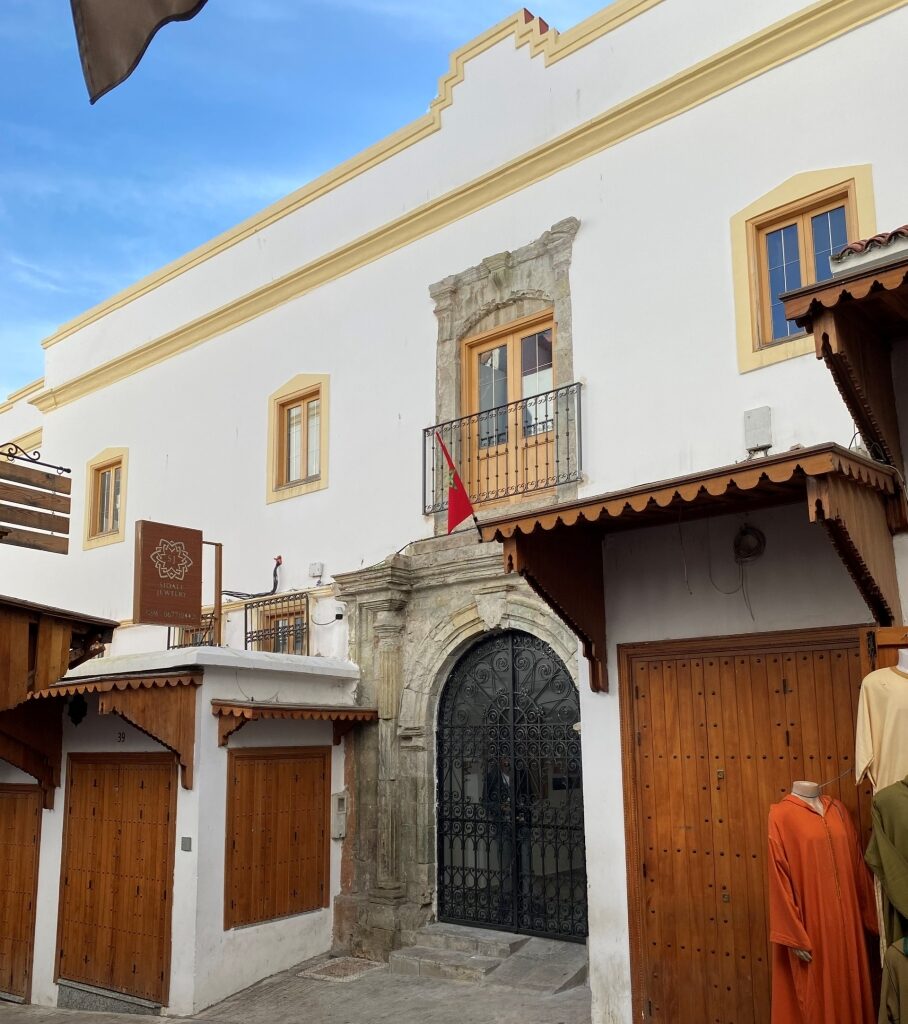
Musee Dar Niaba Photo by Boubloub on Wikimedia Commons, licensed under CC BY-SA 4.0
The Dar Niaba Museum is near the Petit Socco, in a beautiful Portuguese-era building. Once the French Consulate, it holds a lovely contemporary art collection and a history of Moroccan diplomacy.
The building played a key role in Morocco’s international era when Tangier throbbed with intrigue. This is reflected in an archive of photographs, letters, and other documents bringing that time to life.
Its art collection features many artists inspired by the light of Tangier. Highlights include sketches by Eugène Delacroix and many works by Antonio Fuentes, a close friend of Picasso.
Photograph the Phoenician Tombs
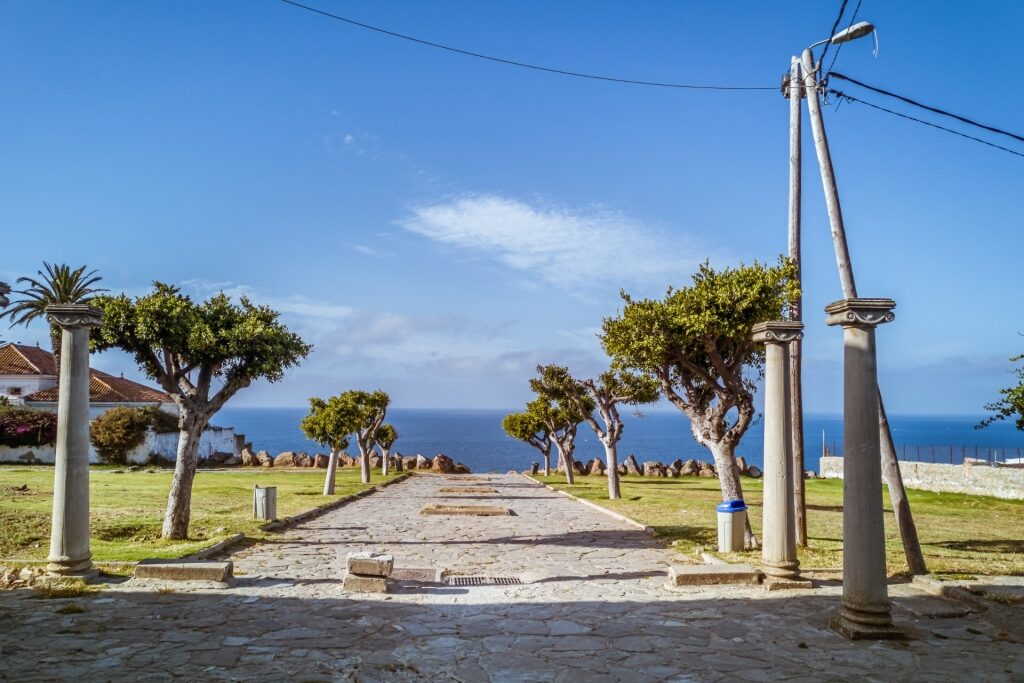
Phoenician Tombs
Around the 7th and 6th centuries BCE, Phoenician traders settled on the coast of Morocco. Their tombs, carved into the rocky cliffs, are some of Tangier’s oldest archaeological remains.
The 98 tombs sit on a clifftop with wonderful views of the Strait of Gibraltar and the Spanish city of Tarifa on a clear day. A dramatic sight in themselves, their history has revealed much about Mediterranean trade more than 2,000 years ago.
Of the original tombs, only 20 remain clearly visible, often filled with rainwater. At the cliff edge, steps carved into the rock—known as the “Steps of Doom” for reasons that will be obvious—lead down to the seafront.
Take a Break at St. Andrew’s Church
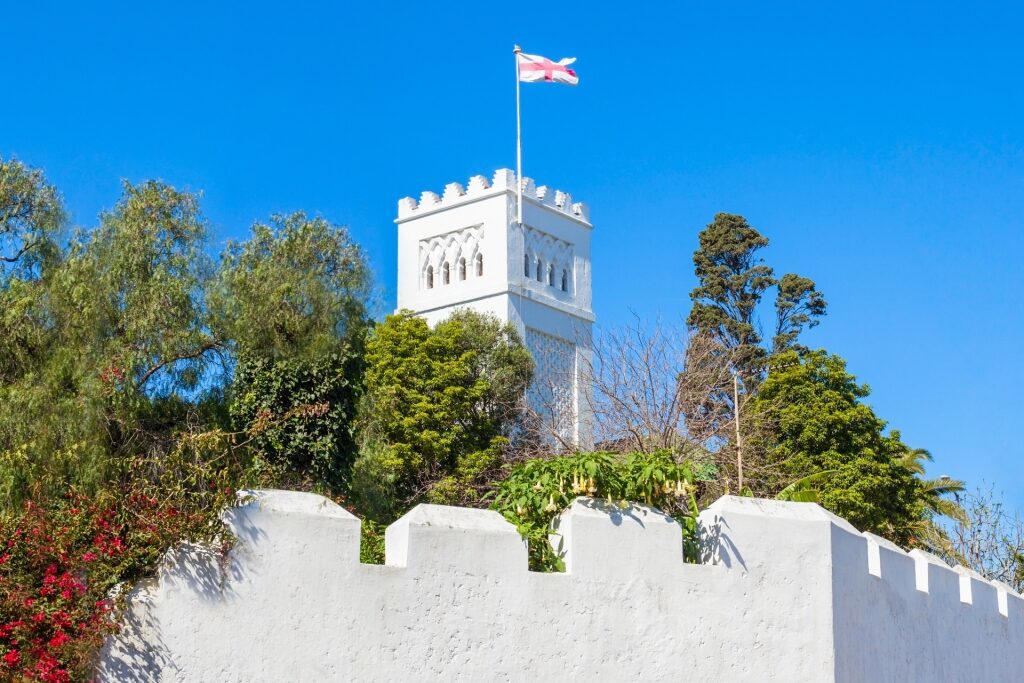
St. Andrew’s Church
The gleaming white tower of St. Andrew’s Church is a major Tangier landmark, a sight painted by Henri Matisse in 1912. It stands out from the thick greenery of a tree-filled garden, screened by a high surrounding wall.
The church architecture adds Moorish elements to what is at first glance a typical Anglican building. Beyond the minaret-style bell tower, interior features include Islamic decorative motifs such as ornate arches and Arabic calligraphy of Bible verses.
Memorial plaques on the walls remember some notable members of the church community. Outside, the well-shaded grounds contain picturesque old graves from Tangier’s international period.
Stroll the Corniche
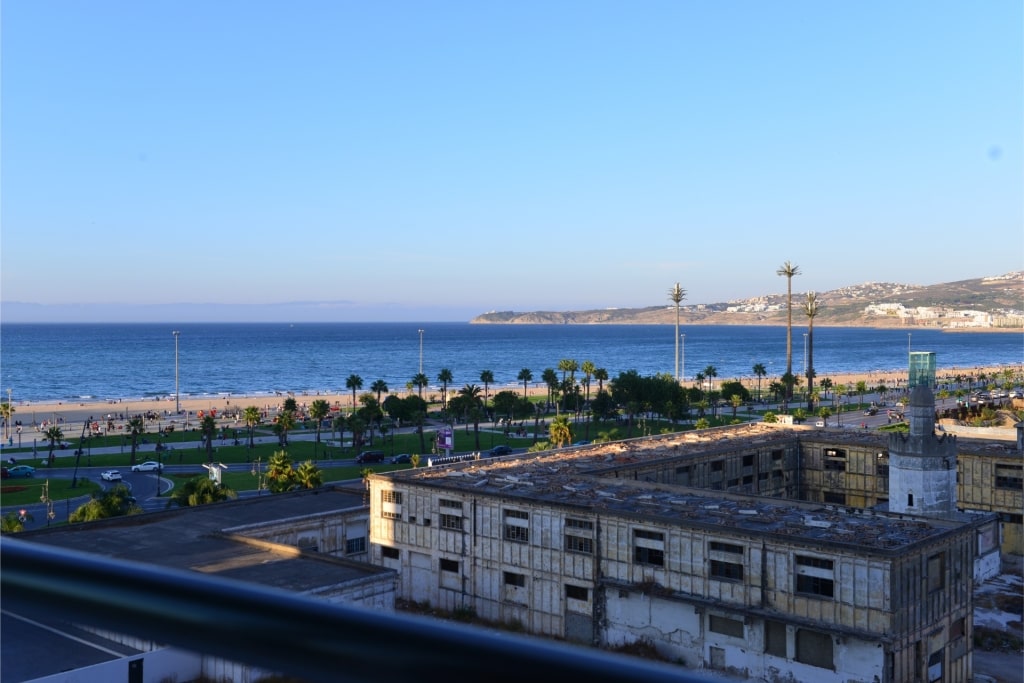
Corniche
For a taste of daily life in modern Tangiers, walk the seafront Corniche. This scenic promenade stretches along the city’s Mediterranean coastline behind Tangier Beach, or Plage Municipale.
The palm-lined boulevard has views of the Strait of Gibraltar and Spain on clear days. The many cafés and restaurants, backed by luxury apartments, often have terraces to enjoy the vista.
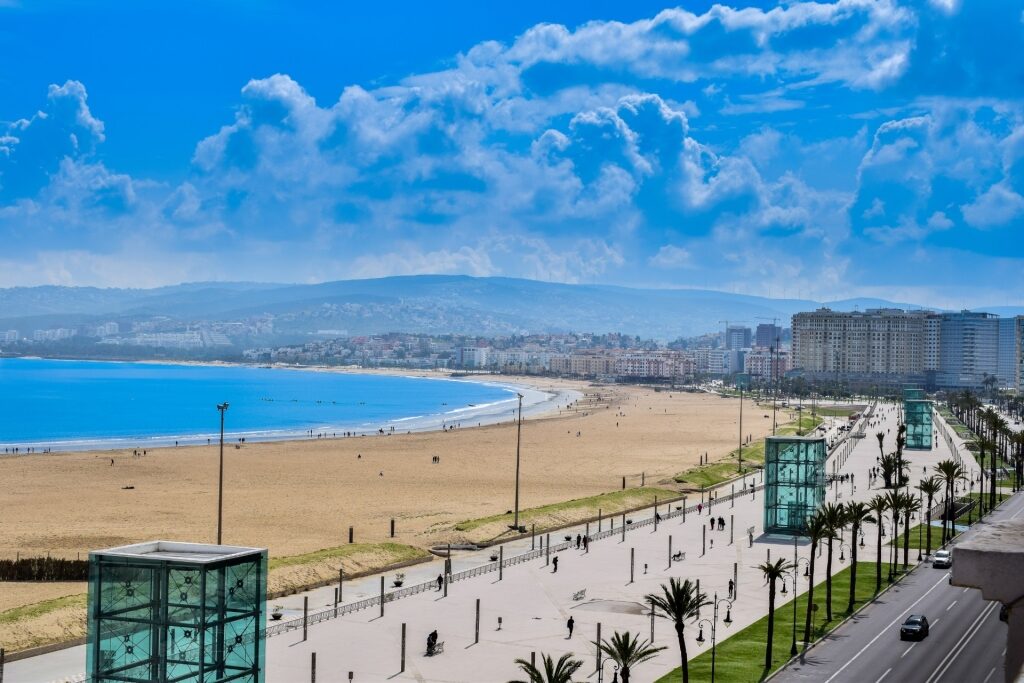
Tangier Beach
Tangier Beach extends from the ferry port to a busy new marina. Lively in summer, the beach is not really a place to swim but has plentiful lounge chairs to rent.
Visit the American Legation Museum
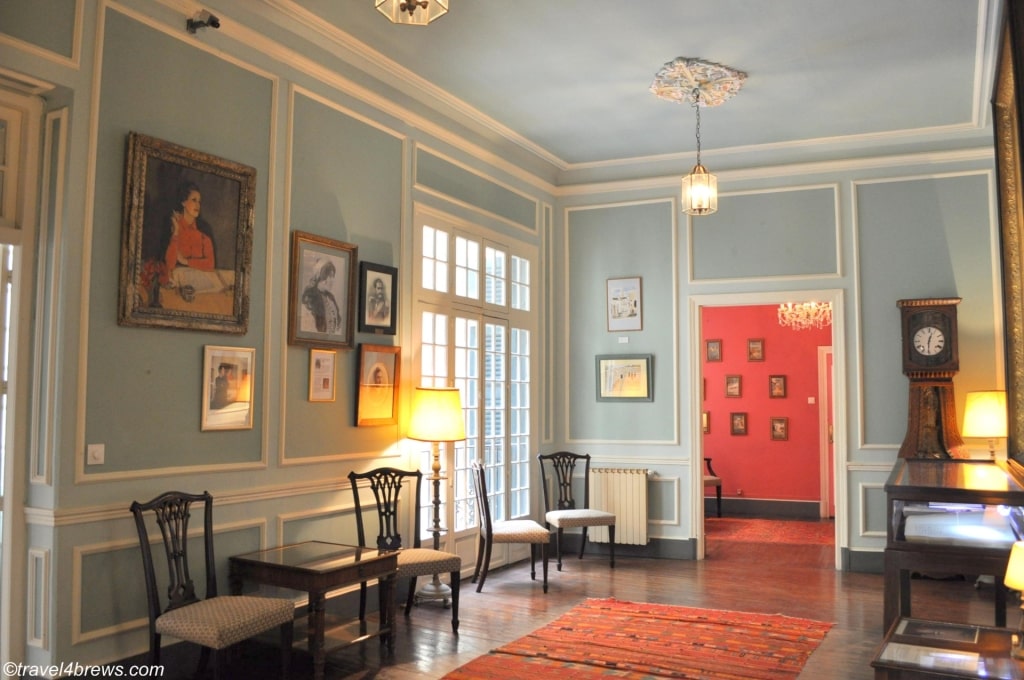
American Legation Museum Photo by Travel4Brews on Flickr, licensed under CC BY 2.0
The former American Legation was the first American public property outside the United States. Sitting just inside the Medina, it served as a diplomatic mission for 140 years after being gifted by Morocco in 1821. A visit here is one of the best things to do in Tangier if you’re interested in the art and history that Morocco is known for.
The lovely old building with its cool courtyards and shutters is now a fascinating museum. Besides spaces devoted to the work of the mission, one entire wing is dedicated to writer Paul Bowles.
The McBey Suite holds a collection by Scottish artist James McBey, who lived in Tangier for 20 years. Besides notable work by other artists, it holds his own masterpiece, Zohra, a haunting 1952 portrait of a servant girl.
Another tiny room brings back the intense days of World War II to life, when vital intelligence came out of multinational Tangier. Elsewhere, a collection of battlefield dioramas with hundreds of hand-painted model soldiers are part of the famous Malcolm Forbes Toy Collection.
Discover Tangier’s Old Cafés
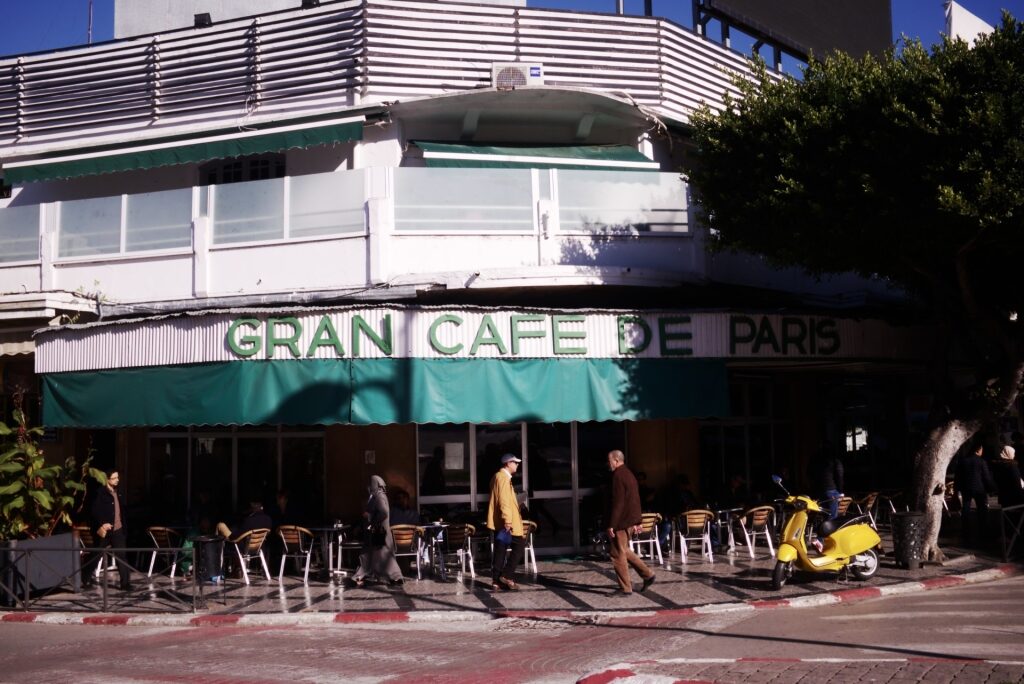
Gran Café de Paris Photo by Nicolas Vigier on Flickr, licensed under CC0 1.0
Tangier was a notable haven for artists and writers from the 1940s through the 1960s. Its International Zone status from 1923 to 1956, when it was governed by several European powers, gave it low taxes and lax laws tolerant of alternative lifestyles.
This heady atmosphere of freedom attracted names such as William S. Burroughs, Allen Ginsberg, and Tennessee Williams. In turn, they were inspired by the exotic charms of the medina, the mix of cultures, and the city’s vibrant coffee shop culture.
Among the most famous to appear in the subsequent literature is the Gran Café de Paris. Sitting on a curve of busy Boulevard Pasteur, it still has its wonderful Art Deco interior.
The breathtaking views from the many terraces of Café Hafa helped make it a favorite spot of writer and composer Paul Bowles and later, the Rolling Stones. Deep in the Kasbah, Café Baba was a hangout for the Beat Generation writers and musicians from the 1950s onwards.
Cool Down in Parc Perdicaris
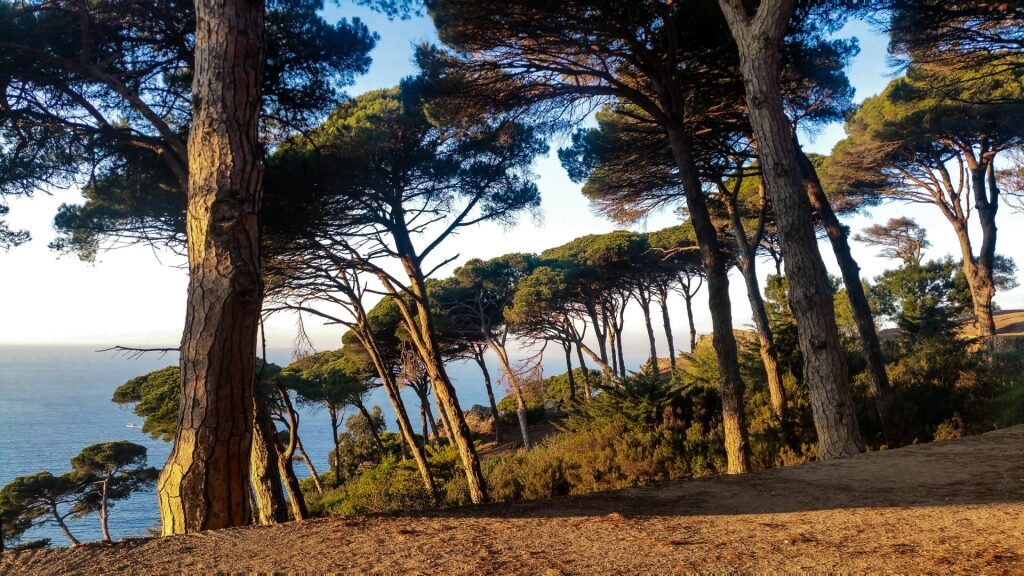
Parc Perdicaris
Parc Perdicaris—also called Rmilat Forest—is a large area of lush greenery on the edge of Tangier. A wonderful, cool escape from the city’s heat, it once belonged to Ion Perdicaris, a Greek-American playboy.
Perdicaris sparked an international incident in 1904 when he was kidnapped from his villa here by a self-proclaimed “pirate”. President Theodore Roosevelt’s threats of “gunboat diplomacy” to resolve the issue helped him win reelection that year.
Such drama seems very distant when you follow a quiet walking trail through tall eucalyptus trees and gnarled cork oaks. There are spectacular viewpoints, picnic spots, and the atmospheric old villa, now restored as an interesting visitor center.
Learn to Cook Moroccan Cuisine
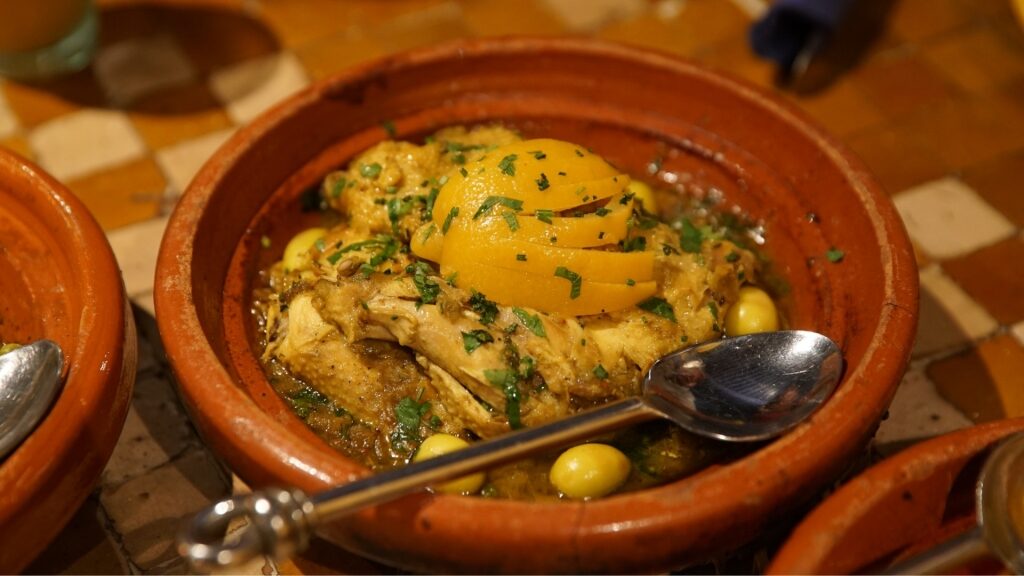
Tagine
What better souvenir of a visit to Tangier than a lesson in cooking Moroccan cuisine? Deceptively simple, it depends on a complex base called ras el hanout, which blends dozens of spices.
You’ll learn its secrets and also how to use a tagine, the clay cooking vessel that gives its name to slow-cooked stews. The resulting tender meats and vegetables infused with spices or lemons are a real taste of Morocco.
The national dish of couscous, traditionally served on Fridays and special occasions, is another meal to remember. You’ll find these and many other recipes on offer at cookery classes in the Medina and elsewhere in Tangier.
Browse Art at Villa Harris
Villa Harris, the former home of colorful British journalist Walter Harris, is now a beautifully restored modern art museum. Its collection celebrates European and later Moroccan artists, beginning with those Romantics inspired by Delacroix’s visit to Tangier in 1832.
Notable European artists in the collection include Claudio Bravo, Edy-Legrand, and Miro. Moroccan painters include Mohamed Hamri, Ahmed Yacoubi, and Hassan El Glaoui.
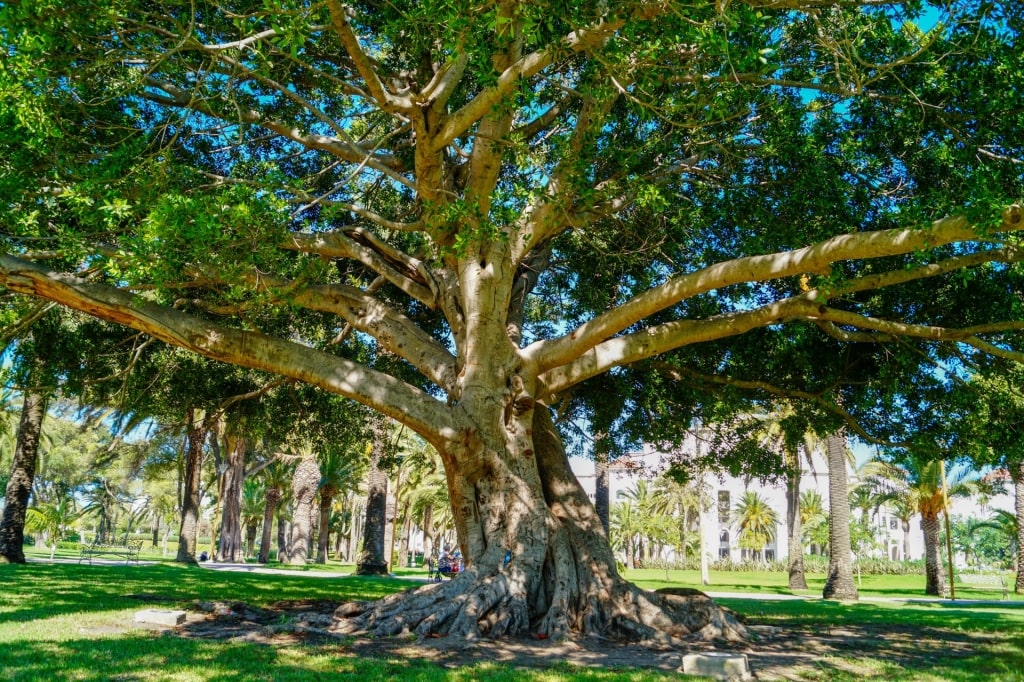
Villa Harris Park
The villa’s architecture blends European style with decorative Moorish elements such as arches, intricate calligraphy, and zellij tilework. Leave time to walk in the beautiful gardens.
Search Out Jewish Tangier
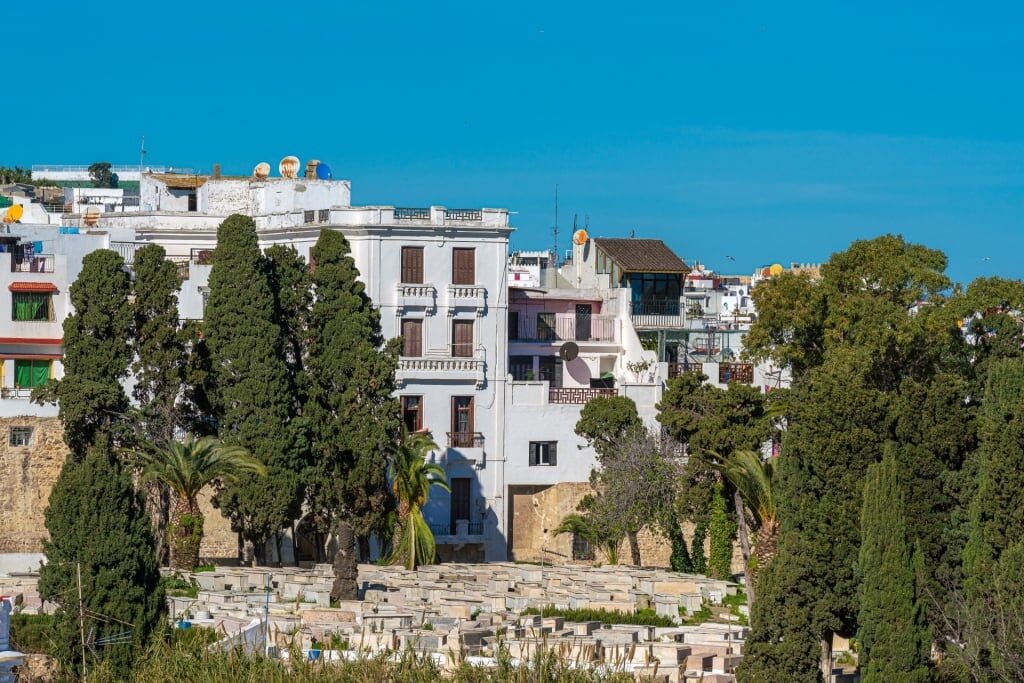
Jewish Quarter
Morocco’s large Jewish community has created a fascinating legacy in Tangier. Part of the Old Medina includes a Jewish Quarter with distinctive architectural elements, including Hebrew inscriptions.
Here, you’ll also find the beautiful Nahon Synagogue, dating to 1878. It holds the Moses Nahon Museum, which tells the fascinating story of Tangier’s Jewish community.
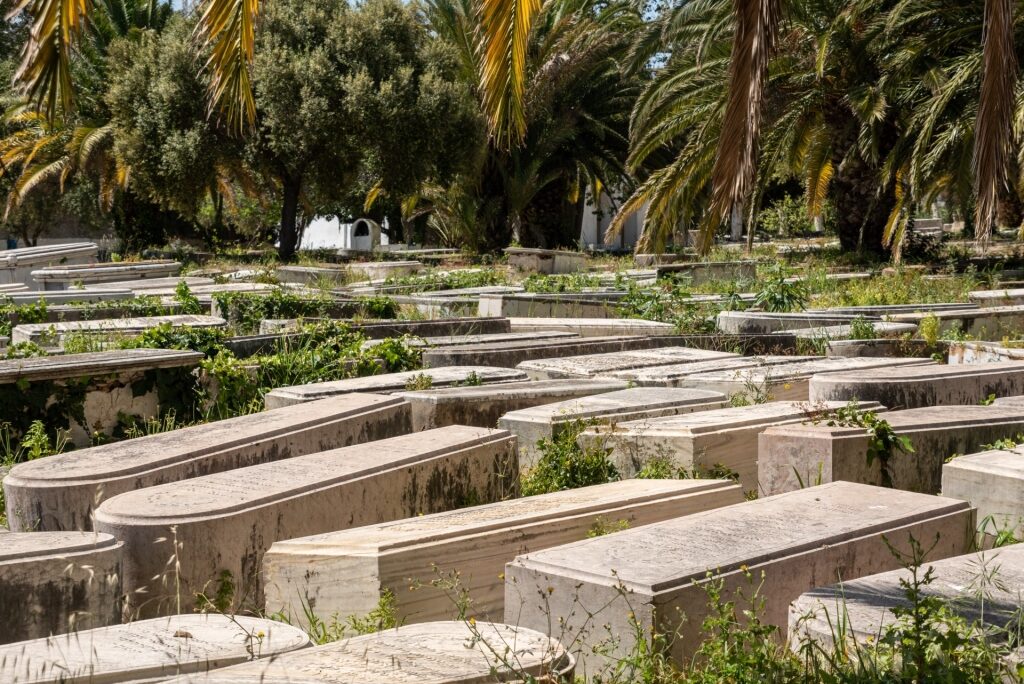
Jewish Cemetery
The Jewish Cemetery behind the Medina on Rue de Portugal holds graves that date back to the 16th century. Most of the tombs are simple and heavily weathered, but are often dotted with “Visitation Stones”—a pebble left as a token of remembrance.
Many tombs are of Andalusian Sephardic Jews who arrived after expulsion from Spain and Portugal. This historical site sits on a hillside area known as Mont des Juifs—”Jews’ Mountain”.
Gaze at Europe from Cape Spartel
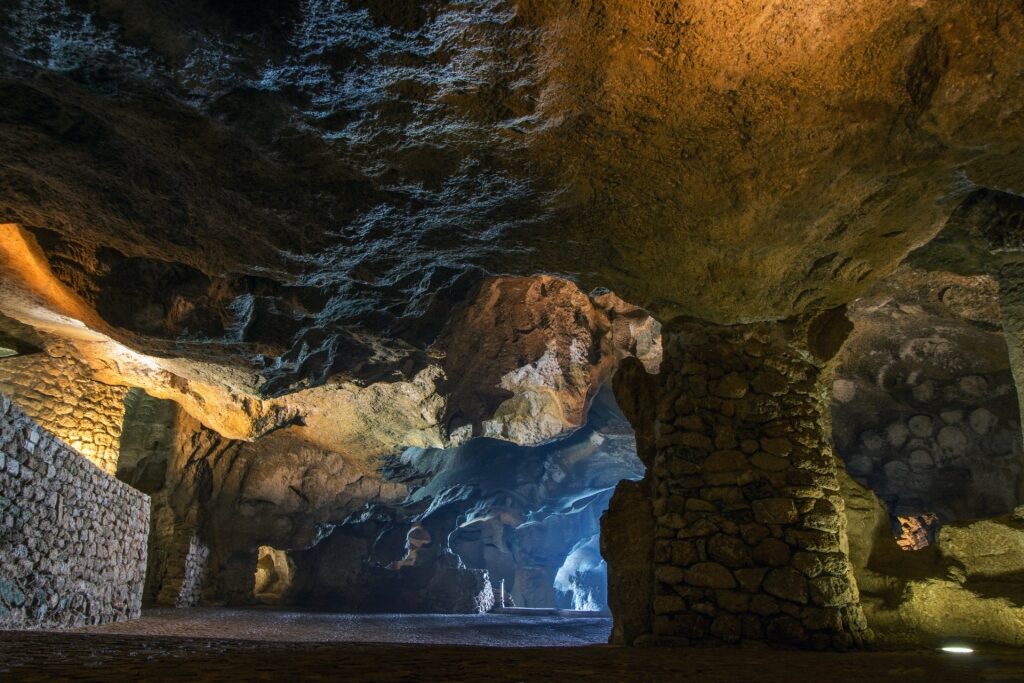
Cape Spartel
Cap Spartel, the northwesternmost point of Africa, is only a few dozen miles from Europe. This spot, where the Mediterranean Sea meets the Atlantic Ocean, is marked by a historic lighthouse built in 1864.
Nearby are the Caves of Hercules, where in mythology, Hercules is said to have rested before his 12 labors. Part natural, the caves were also quarried over centuries by Berbers for millstones.
There is a sea-level entrance but most visitors enter from the landward side. A major attraction is an opening to the sea that resembles the map of Africa.
Buy Crafts in Tetouan
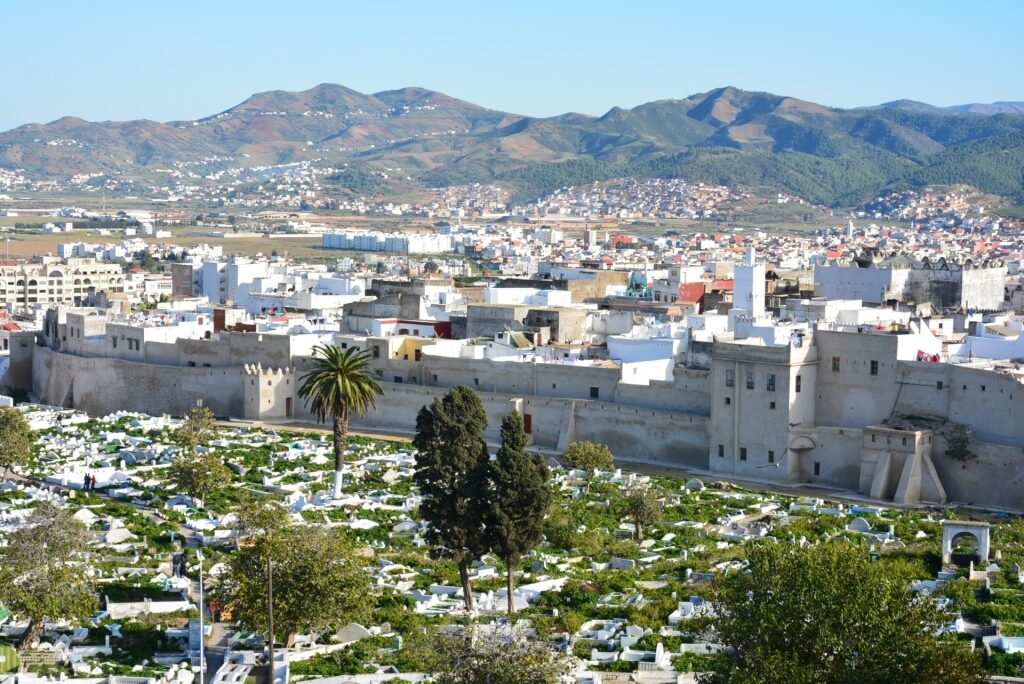
Tetouan
Tetouan, an hour east of Tangier, is nicknamed the “White Dove” for its white buildings tumbling down the Rif Mountains. The best-preserved Medina in Morocco also helped it win recognition as a UNESCO World Heritage site.
Supporting the shops of the Medina, the town’s Tetouan’s Royal Artisan School preserves centuries of crafts skills. From textiles to leatherwork, you’ll find some of the best in Morocco.
As the capital of Spanish Morocco from 1912 to 1956, the town also has a legacy of Art Deco buildings in its New Town. Join a tour to learn more about its rich history and lively present.
Walk the Beach at Asilah
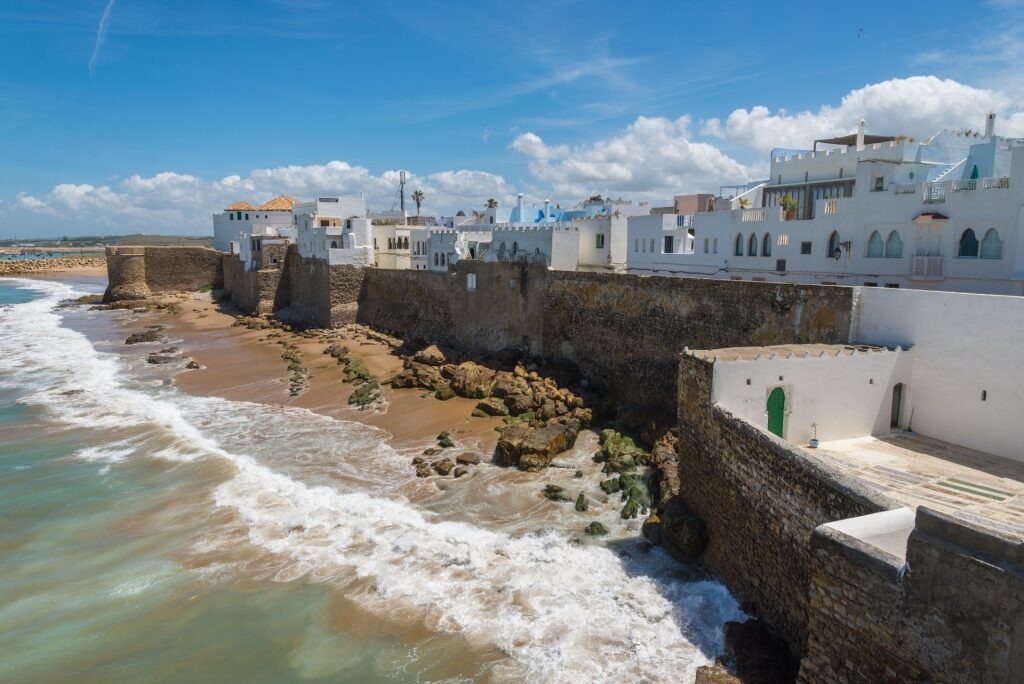
Asilah
Its name deriving from the Berber word for “beauty”, the delightful coastal town of Asilah lives up to that promise. Sitting on the Atlantic coast an hour south of Tangier, it has sweeping beaches and a pastel-colored Medina.
The town is enclosed by picturesque 15th-century stone ramparts, above which peek whitewashed buildings and clay-tiled roofs. Popular with both Moroccan and international visitors for its beaches, it’s also well-known for its seafood restaurants and art scene.
An annual Cultural Festival has built a legacy of colorful murals and art galleries. The Medina itself is a work of art, with white walls contrasted by blue detailing on windows and doors.
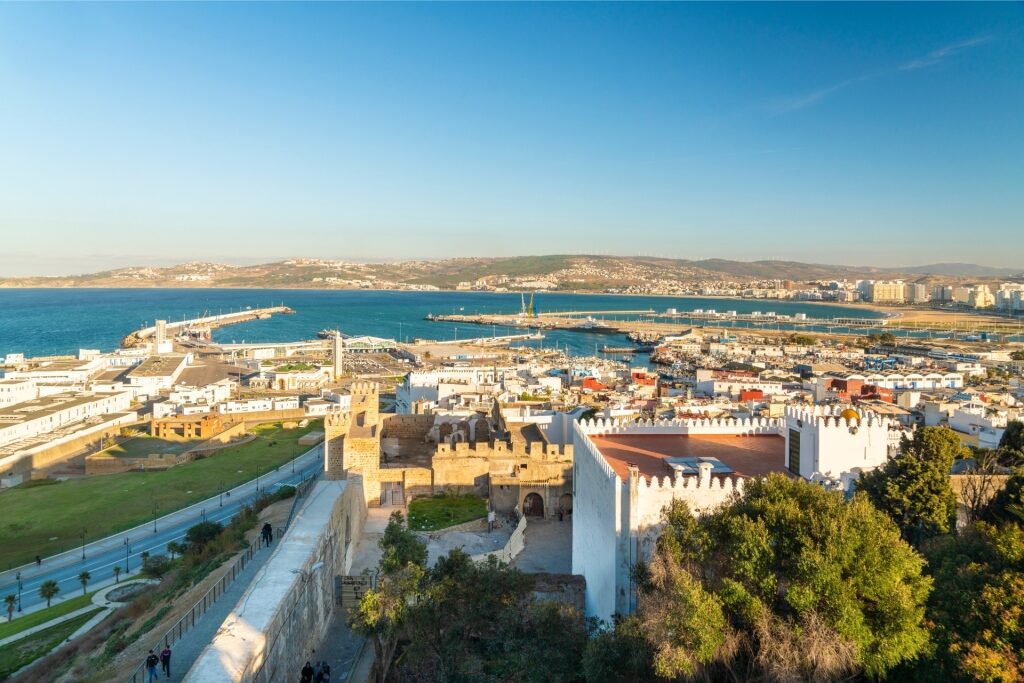
Tangier
Are you inspired to visit Morocco? Browse Celebrity’s cruises to Tangier and plan your next adventure.
